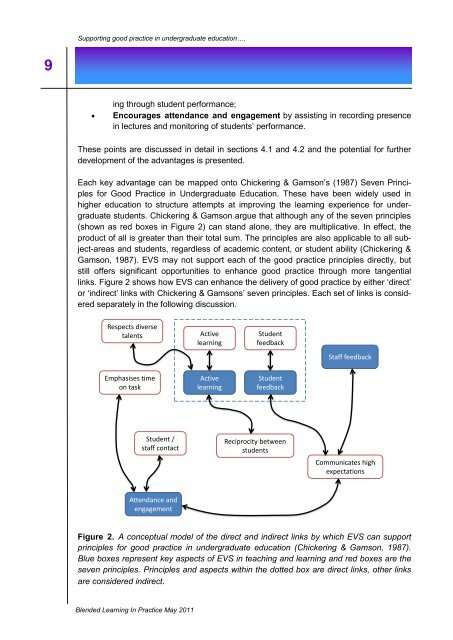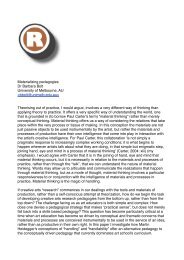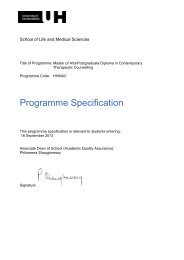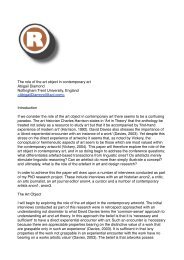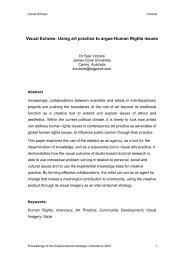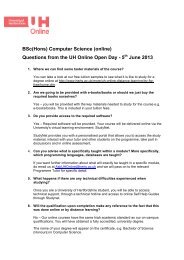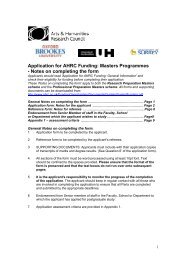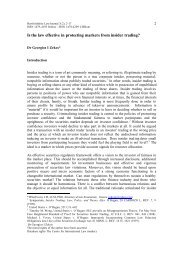3 - University of Hertfordshire
3 - University of Hertfordshire
3 - University of Hertfordshire
You also want an ePaper? Increase the reach of your titles
YUMPU automatically turns print PDFs into web optimized ePapers that Google loves.
Supporting good practice in undergraduate education….9ing through student performance;Encourages attendance and engagement by assisting in recording presencein lectures and monitoring <strong>of</strong> students‟ performance.These points are discussed in detail in sections 4.1 and 4.2 and the potential for furtherdevelopment <strong>of</strong> the advantages is presented.Each key advantage can be mapped onto Chickering & Gamson‟s (1987) Seven Principlesfor Good Practice in Undergraduate Education. These have been widely used inhigher education to structure attempts at improving the learning experience for undergraduatestudents. Chickering & Gamson argue that although any <strong>of</strong> the seven principles(shown as red boxes in Figure 2) can stand alone, they are multiplicative. In effect, theproduct <strong>of</strong> all is greater than their total sum. The principles are also applicable to all subject-areasand students, regardless <strong>of</strong> academic content, or student ability (Chickering &Gamson, 1987). EVS may not support each <strong>of</strong> the good practice principles directly, butstill <strong>of</strong>fers significant opportunities to enhance good practice through more tangentiallinks. Figure 2 shows how EVS can enhance the delivery <strong>of</strong> good practice by either „direct‟or „indirect‟ links with Chickering & Gamsons‟ seven principles. Each set <strong>of</strong> links is consideredseparately in the following discussion.Respects diversetalentsActivelearningStudentfeedbackStaff feedbackEmphasises timeon taskActivelearningStudentfeedbackStudent /staff contactReciprocity betweenstudentsCommunicates highexpectationsAttendance andengagementFigure 2. A conceptual model <strong>of</strong> the direct and indirect links by which EVS can supportprinciples for good practice in undergraduate education (Chickering & Gamson, 1987).Blue boxes represent key aspects <strong>of</strong> EVS in teaching and learning and red boxes are theseven principles. Principles and aspects within the dotted box are direct links, other linksare considered indirect.Blended Learning In Practice May 2011


